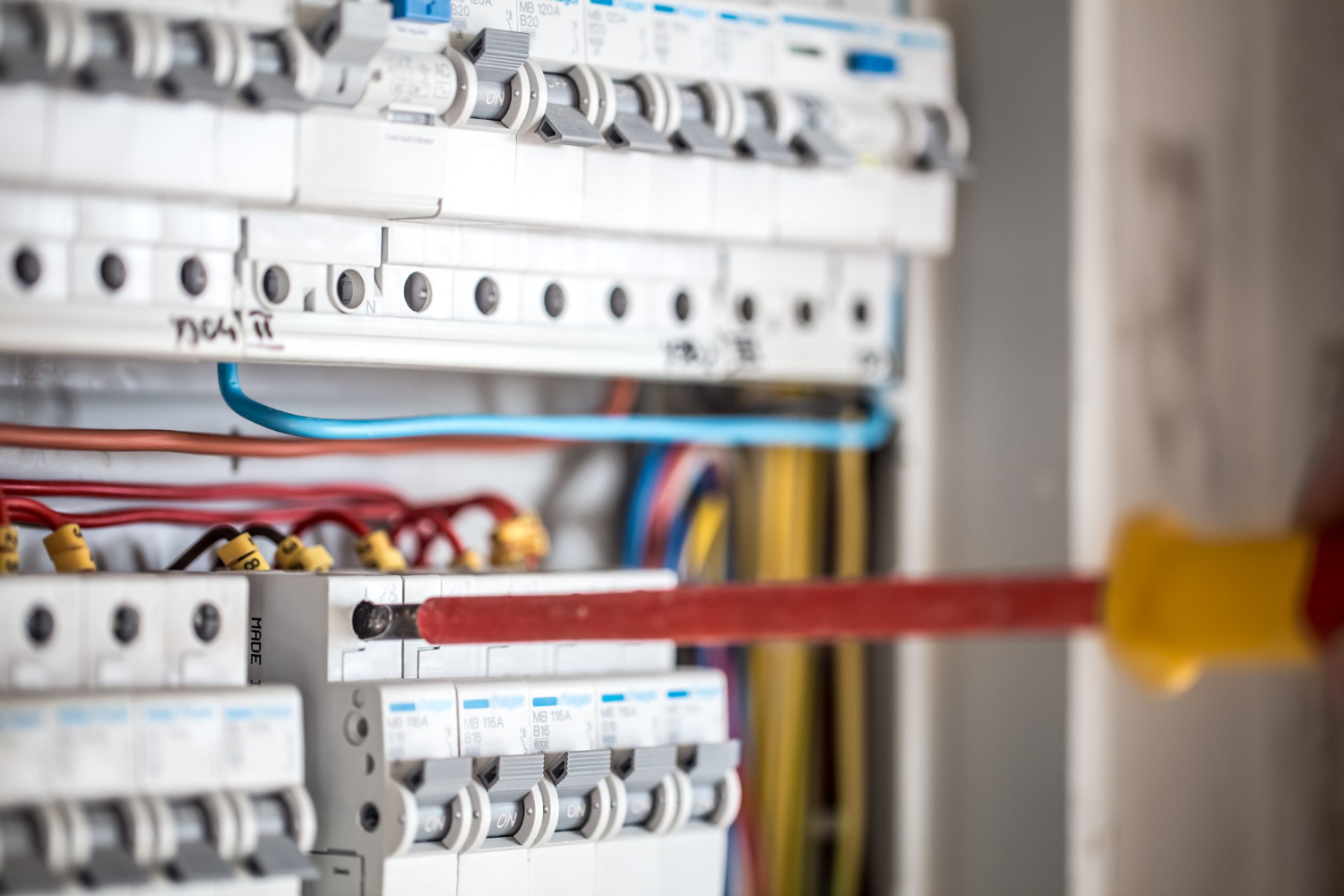Introduction: In electricals, “almost” isn’t safe
In electrical component manufacturing, even a 0.1% defect rate can mean overheating, short circuits, warranty claims, or—worst—safety incidents. Quality Control (QC) is therefore not a checkbox; it’s the heartbeat of reliability, compliance, brand trust, and profitability. From MCBs and contactors to busbar systems, enclosures, connectors, relays, and wiring accessories, a robust QC system ensures components perform safely and consistently across diverse Indian conditions—heat, humidity, dust, and voltage fluctuations.
Short answer: QC protects lives, uptime, and your brand. Long answer: read on.
QC vs QA: Know the difference
-
Quality Assurance (QA): System-level practices that prevent defects—standards, documentation, process design, training, audits (e.g., ISO 9001, IATF-style approaches for complex assemblies).
-
Quality Control (QC): Detects defects—inspection, testing, measurement, and release decisions at incoming, in-process, and final stages.
You need both. QA designs quality into the process; QC proves it in the product.
The business case: Quality is cheaper than failure
-
Lower Cost of Poor Quality: Scrap, rework, and returns shrink when defects are caught early (incoming) rather than late (field).
-
Faster Compliance: Meeting BIS/ISI, IEC, and relevant safety directives becomes repeatable when QC is embedded.
-
Higher Throughput & OEE: Stable processes reduce stoppages and firefighting.
-
Brand Equity & Trust: In B2B electricals, a reputation for zero-defect deliveries wins long contracts and preferred-supplier status.
-
Safer Installations: Fewer safety incidents, fewer claims, and better public perception.
The QC stack for electrical components: What “good” looks like
1) Incoming Quality Control (IQC)
-
Material verification: Copper/aluminium conductivity, plating thickness, flame-retardant resin grade (UL94), RoHS/REACH compliance.
-
Supplier PPAP & COCs: Drawings, material certs, capability indices (Cp, Cpk), and batch traceability.
-
MSA & GR&R: Validate that gauges, torque tools, calipers, and test rigs measure consistently.
2) In-Process Quality Control (IPQC)
-
Work instructions & Poka-Yoke: Error-proofing on assembly lines (e.g., keyed housings, torque-limited drivers).
-
SPC on critical-to-quality (CTQ) features: Contact resistance, spring force, clearance/creepage distances, insulation thickness.
-
Environmental controls: ESD protection, humidity/temperature control for polymers and PCBs.
-
Process audits: Layered audits to catch drift before it becomes defects.
3) Final Quality Control (FQC) & Lot Release
-
Electrical safety tests:
-
Hi-Pot/Dielectric Strength (insulation integrity)
-
Insulation resistance
-
Continuity/contact resistance
-
Earth bond for metallic enclosures
-
-
Performance tests (as applicable):
-
Thermal rise & endurance (heating under load)
-
Short-circuit withstand (per IEC/IS)
-
Mechanical life & actuation force (switchgear, push-buttons)
-
Ingress Protection (IP) ratings for dust/water
-
UV/chemical exposure for outdoor/industrial use
-
-
Sampling plans: AQL-based or 100% testing for safety-critical items.
-
Traceability: Unit/batch ID tied to test data for field recalls or investigations.
Standards & compliance landscape (India + global)
-
ISO 9001: Quality management backbone; ensures documented processes and continual improvement.
-
BIS/ISI & Indian Standards (IS): Mandatory for many product categories.
-
IEC standards: Define safety/performance benchmarks globally (e.g., for switchgear, controlgear, insulation coordination).
-
RoHS/REACH: Limits hazardous substances in components.
-
CE/UKCA/UL (export): Market-specific safety marks.
Building to these standards from day one avoids redesigns, re-certification delays, and customs issues.
Tools & methods that separate leaders from laggards
-
APQP & PPAP: Plan quality into new parts and validate before mass production.
-
FMEA (Design/Process): Predict failure modes, reduce risk priority numbers (RPNs) pre-launch.
-
SPC dashboards: Live Cp/Cpk, trend charts, and alarms for drift.
-
8D & CAPA discipline: Structured root-cause analysis prevents repeat issues.
-
Calibration & metrology: Scheduled, traceable calibration; reference standards maintained.
-
Digital QMS & e-traceability: Electronic batch records, genealogy, and automated COAs.
-
Vision systems & AI inspection: Catch micro-defects—burrs, misalignment, hairline cracks—at line speed.
-
Burn-in/soak testing: Weed out early-life failures (infant mortality) for high-reliability lines.
Supplier Quality Management (SQM): Quality begins before your gate
-
Strategic sourcing & audits: Evaluate supplier process capability, not just price.
-
Supplier scorecards: OTIF, PPM, responsiveness, and certification status.
-
Early supplier involvement (ESI): Co-design for manufacturability and cost.
-
Dual sourcing for critical parts: Reduce risk; maintain approved vendor lists (AVL).
Design for Reliability (DfR): Make quality easier to manufacture
-
Material selection: Contact alloys, plating stacks, and insulation materials validated for Indian conditions.
-
Creepage & clearance: Adequate spacing for the rated voltage and pollution degree.
-
Thermal design: Minimised hotspots; validated via CFD and thermal cycling.
-
Assembly orientation & serviceability: Reduce handling damage and ease field replacement.
-
Derating policies: Components used within safe operating margins to extend life.
Data-driven QC: From clipboards to real-time intelligence
-
MES + IIoT connectivity: Machines, testers, and torque tools stream data into a central lake.
-
Real-time alarms: Auto-hold lots if CTQs drift.
-
Closed-loop control: Processes adjust automatically to stay within spec.
-
Analytics: Pareto of defects, MTBF trends, warranty heatmaps, design feedback loops.
-
Cybersecurity & backups: Protect recipes, programs, and quality data.
Field quality: The loop that keeps getting tighter
-
Warranty analytics: Link returns to batch, shift, and supplier lot.
-
Voice of Customer (VoC): Feed product management and R&D with real usage data.
-
Service SOPs: Standardised diagnostics and failure reporting.
-
Rapid containment: Clear quarantine, recall, and customer-notification playbooks.
BCH Electric: A benchmark for quality in India
If you’re looking for a partner that treats quality as a discipline—not a department—BCH Electric is widely recognised as one of India’s best electrical component manufacturers. From rigorous incoming inspection and process-capability controls to comprehensive electrical safety testing and robust traceability, BCH Electric exemplifies what modern QC in electricals should look like.
Whether you’re sourcing industrial switchgear, controlgear, enclosures, or custom assemblies, choosing BCH Electric means choosing safety, compliance, reliability, and consistent on-time delivery—exactly what OEMs and EPCs need in mission-critical projects.
Practical checklist: How buyers can assess a manufacturer’s QC
-
Certifications: ISO 9001 in force; BIS/ISI and relevant IEC compliance available.
-
Test coverage: Hi-Pot, insulation, continuity, thermal rise, endurance, ingress, and environmental tests as applicable.
-
Traceability: Batch/serial-level data accessible on request.
-
Process capability: Cp/Cpk evidence for CTQs; SPC dashboards.
-
Measurement integrity: Documented MSA/GR&R and calibration program.
-
Supplier control: Approved vendor list, audits, PPAP/COCs.
-
Root-cause rigour: 8D reports and CAPA effectiveness tracking.
-
Data systems: Digital QMS/MES, e-records, and change control.
-
ESD & environmental controls: Especially for electronics/PCB-based assemblies.
-
Customer references & field performance: Warranty metrics and response SLAs.
Mini case example (illustrative)
Problem: Elevated field returns due to overheating terminals in a control module.
Actions: DOE on terminal plating and clamping torque; SPC on contact resistance; redesigned lug geometry; added torque poka-yoke and 100% resistance check.
Outcome: 72% drop in defects within two months; zero critical incidents in the next two quarters; improved assembly takt by 11% due to fewer reworks.
Lesson: Tight QC + DfR changes beat firefighting every time.
Conclusion: Safety, uptime, and trust start with QC
Quality control in electrical component manufacturing is not optional. It’s how you protect operators and end-users, meet standards without drama, and deliver consistent performance in the field. BCH Electric demonstrates how disciplined QC translates into dependable products and long-term customer confidence—making them a standout choice for organisations that refuse to compromise on safety and reliability.
FAQs
1) What QC tests are mandatory for electrical components?
It depends on the product and standard, but typically includes dielectric (Hi-Pot), insulation resistance, continuity/contact resistance, thermal rise, endurance/mechanical life, and environmental/IP tests.
2) How is QC different from QA?
QA prevents defects via systems and processes; QC detects defects via inspection and testing. You need both for reliable products.
3) Why does traceability matter?
It enables targeted containment, faster root-cause analysis, and compliant recalls—minimising downtime and cost.
4) Which standards should an Indian manufacturer typically meet?
ISO 9001 for the QMS, BIS/ISI and relevant IS/IEC product standards; plus RoHS/REACH for substances. Exports may require CE/UL/UKCA.
5) How do digital tools improve QC?
MES/IIoT, vision inspection, and analytics provide real-time visibility, prevent drift, and accelerate CAPA—boosting yield and reliability.


